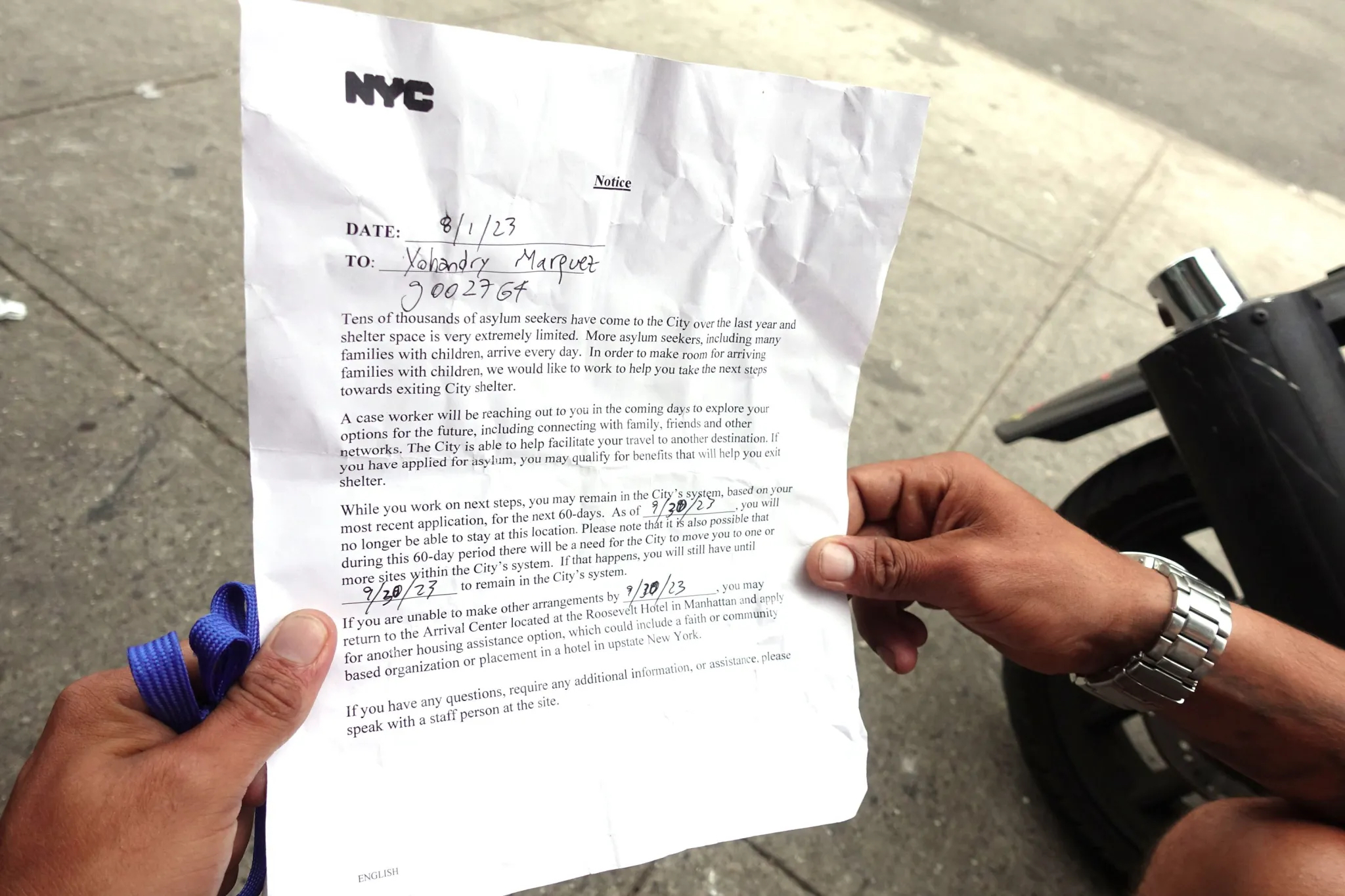The Biden Administration may have thought that substantially liberalizing asylum rules to allow 30,000 entrants per month would be a twofer: they’d be suppressing low-end wages and assuring members of the professional-managerial class a supply of nannies, housecleaners, yardmen, and Uber drivers and were creating future Democratic party voters.
They might have talked to Angela Merkel first. Less than a year into Biden’s new program, established via executive order, the Democrats are already getting overt criticism (RFK, Jr.) and quiet rebellion (New York City major Eric Adams) from their own ranks, and it was predictable.
Germany took in nearly 1 million Syrian refugees in 2015-2016. This was a humanitarian measure since the country was war-torn and large numbers of Syrians were using any means possible to get to Europe. Merkel supported taking in immigrants because the birth rate in Germany is well below reproduction level and Syrian had very high education standards, so optimists hoped the Syrian new-comers could become productive guests and potentially citizens.
But hope is not a plan. Germany wasn’t even prepared to house and feed so many arrivals; there were reports of some camps being on the level of slums, with the refugees also unsure of what was coming next. There seemed to be little to no programs to assimilate the Syrians, most of all teaching them German. What good does it do to bring in on average educated immigrants and not have a means for vetting skill levels and setting up tracks to get as many as possible into jobs? Some German pundits are recommending banning the right-wing party AfD now that it mioght come to power. Remember that it was the migrant crisis that gave them their impetus.
NBC outlined the new Biden scheme:
The humanitarian parole program, announced in January, allows up to 30,000 people from Cuba, Haiti, Nicaragua and Venezuela to be admitted into the U.S. each month “for urgent humanitarian reasons or significant public benefit” on a case-by-case basis, according to the Biden administration. Under the program, migrants are allowed to stay in the U.S. for up to two years and must go through an online application process, have a financial sponsor and undergo background and security checks.
Almost 160,000 Cubans, Haitians, Nicaraguans and Venezuelans have arrived under the parole program through the end of June, according to the administration.
RFK, Jr., who visited border town Yuma, Arizona in June, explained that the migrants were overwhelmingly not Hispanic, were overwhelmingly coming for economic reasons, and that the asylum system is a joke, and it looks like by design. RFK, Jr. also described how we have effectively outsourced our border policy to cartels. This discussion starts at 1:01:00:
Ep. 16 RFK Jr. explains Ukraine, bio-labs, and who killed his uncle pic.twitter.com/RMr5VZVqSM
— Tucker Carlson (@TuckerCarlson) August 14, 2023
An opinion piece in the Hill by a recently retired border patrol chief pointed out:
President Biden’s “No More Wall” executive order not only halted construction of former President Donald Trump’s wall, but it also defunded a whole system of border security, including cameras, lights, motion detectors, sensor equipment and access roads. This has left agents with none of the tools they need to do their job of securing the border.
The NBC story added:
A total of 21 Republican-leaning states have challenged the policy, calling it “unlawful” in an amended complaint in February. They wrote that President Joe Biden “has effectively created a new visa program — without the formalities of legislation from Congress.”
District Judge Drew Tipton in Victoria, Texas, a Trump appointee, will begin hearing arguments challenging and defending the program’s legality Thursday.
Now to the story, Uncertainty for Migrants as 60-Day Deadline to Leave Shelters Looms. from THE CITY, on how New York City’s plans to deal with migrant overload includes busing them elsewhere.
By Gywnne Hogan. Originally published at THE CITY on August 230, 2023
Near his shelter in Bushwick, migrant Yohandry Marquez said he doesn’t know where he’ll go when his time there is up.Gwynne Hogan/THE CITY
More than 4,500 adult migrants living in city shelters are fast approaching a deadline when they will be ejected from where they currently live, thanks to a dramatic policy shift announced in July that’s sparking alarm and concern among some people and optimism in others.
At a Brooklyn shelter at 455 Jefferson Avenue, a converted commercial space, at least 533 residents have received the 60-day warning notices, city officials saidat a recent City Council hearing.
The notices, highlighting cutoff dates beginning in late September, instruct shelter residents to go to the Roosevelt Hotel, the city’s main intake for newly arriving asylum- seekers, to “apply for another housing assistance option, which could include a faith or community based organization or placement in a hotel in upstate New York.”
Migrants at the Jefferson Avenue shelter who spoke with THE CITY shared notices they had received, on NYC letterhead with no agency specified, and said they don’t know what to do next.
“It will be chaos,” said Yohandry Marquez, speaking in Spanish outside the shelter on a recent afternoon. The 25-year-old migrant from Venezuela said he suffers from scoliosis, which makes it hard for him to work more than a few hours a day and difficult for him to save enough to rent a place of his own.
“It’s going to get ugly,” Marquez predicted.Spokespeople for Mayor Eric Adams and city agencies involved in the efforts to house migrants did not respond to requests for comment.
Copies of the warning letter shared with THE CITY promise that “a case worker will be reaching out to you in the coming days to explore your options for the future, including connecting with family, friends and other networks. The City is able to facilitate your travel to another destination.”

Marquez shows the 60-day notice he received about leaving the shelter where he’s been staying.Gwynne Hogan/THE CITY
In July, the city expanded its contract with the controversial private contractor DocGo to provide casework services at some migrant shelters, city records show.
Dr. Ted Long, who is playing a key role coordinating migrant response from his post as a senior vice president at NYC Health + Hospitals, has touted the additional attention migrants get once they’ve received eviction notices.
“We ask, ‘how can we help you? And what people are asking us is they want certain tools in order to be able to work,” Long said at a recent press briefing. “Our focus is on giving people what they want, and those are the specifics of what they’re telling us they need.”
But more than a dozen migrants at two city-run shelters who received eviction notices said that they were offered bus or plane tickets to other cities, and were given little guidance beyond that.
“Nada,” said 44-year-old Wilmer Barrios, who said he was recently hospitalized and was told he needs a gallbladder operation, but is delaying it while his housing is up in the air.
“I don’t have any idea what I’m going to do,” Barrios said in Spanish. “I just keep thinking about winter. I don’t know if they’re going to wait until people end up in the street.”
Mayor Eric Adams announced the new 60-day limit on shelter stays for migrants in mid-July, as the number of people in shelters soared to more than 104,000 people, including 54,000 asylum-seekers.
In the month and a half since, the shelter population has continued to climb, with more than 110,000 people in shelters, including nearly 60,000 migrants, as of Aug. 20.
On Day 61
The 60-day warnings are among a host of changes the city has implemented as the shelter population has more than doubled over the past year due to the influx of asylum-seekers from countries all over the world, including Venezuela, Ecuador, Mauritania and Sudan.
Attorneys for Adams and Gov. Kathy Hochul, and advocates for homeless New Yorkers, are in ongoing discussions before a Manhattan Supreme Court judge, debating the city’s shelter obligations under a decades-old court decree.
Tensions have flared between Democratic leaders at the city, state and federallevels over how each arm of government has handled the new arrivals, as public sentiment has shifted toward frustration at the situation.
The Roosevelt Hotel arrival center was overwhelmed in recent weeks, with migrants spending multiple nights outside for a week straight during a heat wave in late July.
The Adams administration has yet to detail how the city will handle the combined influx of migrants kicked out of shelters returning to the Roosevelt Hotel, as well as new arrivals, hundreds of whom are still showing up in New York daily, at the same time.
“The question that we haven’t reached is what happens on day 61,” said Joshua Goldfein, an attorney with The Legal Aid Society who advocates on behalf of homeless New Yorkers. City officials have told him the first asylum-seekers will be evicted from their current shelter placements on Sept. 23.
“What they won’t say is whether they will promise to offer anything at all,” he said.
Thankful to US
But not all migrants who spoke to THE CITY were dreading their final days in city shelters.
Some who have been able to find stable work said they were hopeful about finding a place to rent before their ultimate eviction date. Though many who spoke to THE CITY had been in the U.S. long enough to begin to apply for work authorization, none had done so, and were instead working under-the-table in construction and day labor, as food delivery workers for Uber, or in restaurants.
“I don’t want to return to another shelter,” said Overt Palomino, 28, from Venezuela, who’s been bouncing around various shelters and hotels since his arrival in New York City in October. “Not everyone is as lucky as me. I’m saving money to rent something, because I can,” Palomino said in Spanish.
He added: “I’m thankful to the United States for all the help I’ve gotten.”
Yoxander Duarte, 27, another Venezuelan asylum-seeker, said he was already calling around to people he knew about renting a room and pinching pennies to be able to rent a place.
He said his plan is to “keep working, saving cash so when it’s my time to leave, wherever I can find a place, I’ll rent,” Duarte said in Spanish, snapping his fingers.
Migrants, like residents in the traditional shelter system, have moved multiple times in their months here, often with little to no warning before being told they had to move. The adults currently subject to eviction from the system have been in city shelters for several months, and have already been shuffled around between Randall’s Island, the Brooklyn Cruise Terminal, various hotels, and other emergency shelters during their months in New York City.
“All the shuffling, historically it reduces people’s ability to move on,” Goldfein said. “In the long term it ends up costing the city money, to keep shuffling people around rather than letting them stay in a stable place [so they can] get together what they need to move on.”
New arrivals to the Bushwick shelter have also been warned their days are numbered. Mohammed Hasan, a 28-year-old student who fled war-torn Sudan, arrived in New York City in mid-August. Hasan said that on his second day in the shelter he was told he would have to leave in two months.
“There’s nothing to say,” he said in French. “We’ll see after the two months, where exactly I’ll go, I don’t know.”


